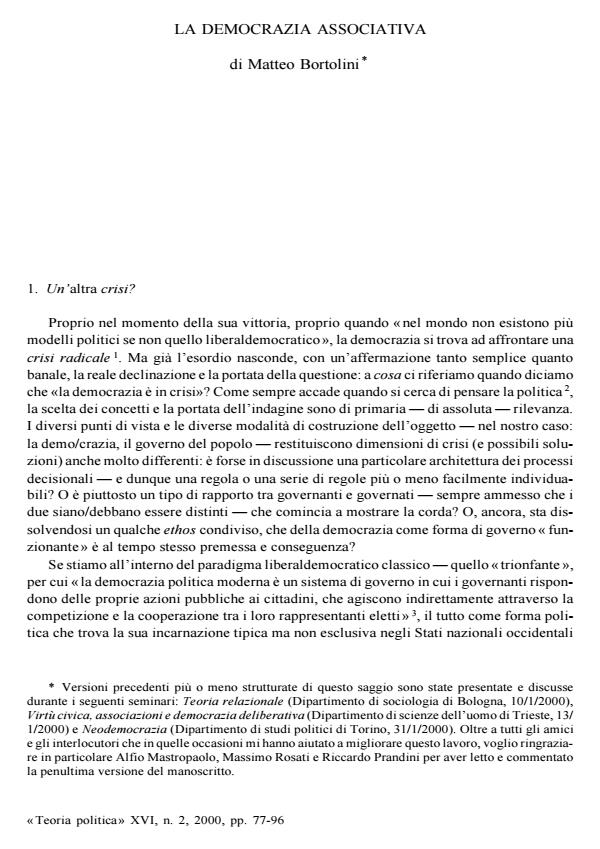La democrazia associativa
Journal title TEORIA POLITICA
Author/s Matteo Bortolini
Publishing Year 1 Issue 2000/2
Language Italian Pages 20 P. File size 69 KB
DOI
DOI is like a bar code for intellectual property: to have more infomation
click here
Below, you can see the article first page
If you want to buy this article in PDF format, you can do it, following the instructions to buy download credits

FrancoAngeli is member of Publishers International Linking Association, Inc (PILA), a not-for-profit association which run the CrossRef service enabling links to and from online scholarly content.
Two models of associative democracy (those proposed by Paul Hirst and Joshua Cohen and Joel Rogers) are compared as possible solutions to the recurrent crises of Western democracies, caused by globalization and the collapse of national states. The two models show two different conceptual strategies: Hirst's associative democracy is constructed on an immunity paradigm which privileges individual choice and the closure of identitary communities; Cohen and Rogers's democratic associationalism is based on a conception of deliberative democracy in which every participant is able and willing to modify constantly his/her preferences and identity while debating with other groups and individuals. The first replicates exactly the conceptual paradigm from which all current crises derive (i.e. the modern paradigm of the sovereign state and individual), while the second is more utopian but closer to a concept of community derived from the work of Bataille, Heidegger and Esposito, and more suited to current day, complex society.
Matteo Bortolini, La democrazia associativa in "TEORIA POLITICA" 2/2000, pp , DOI: